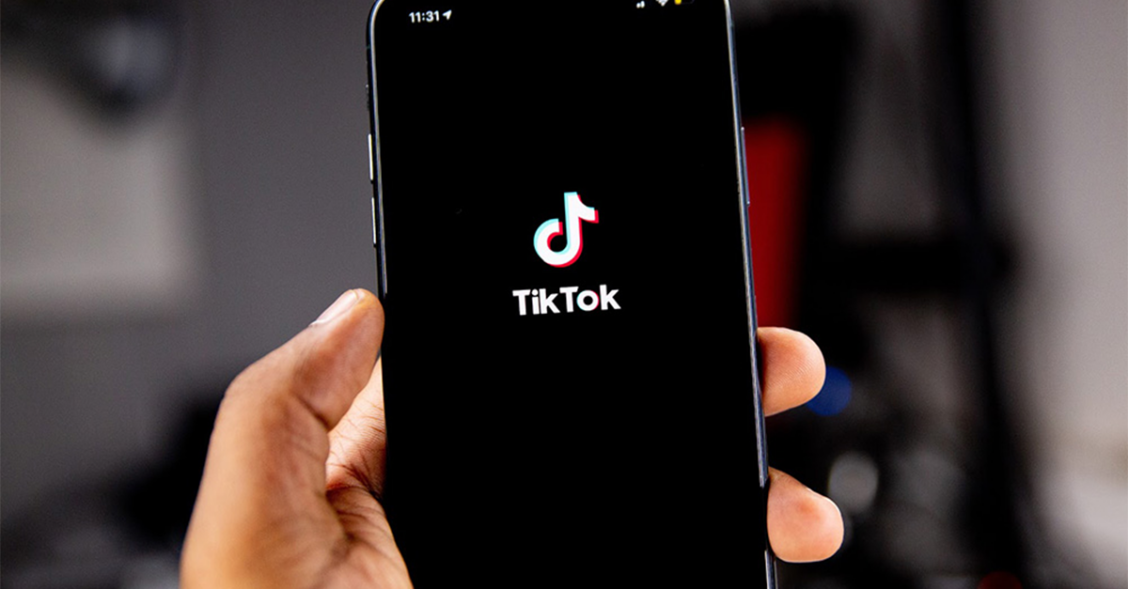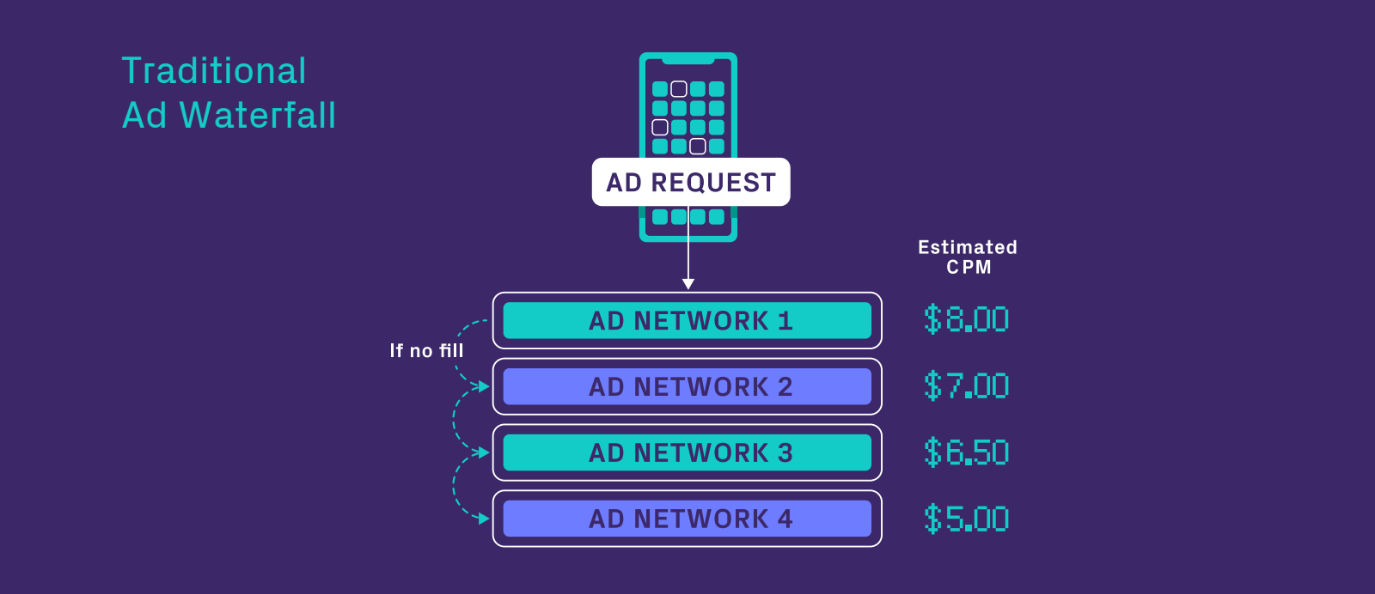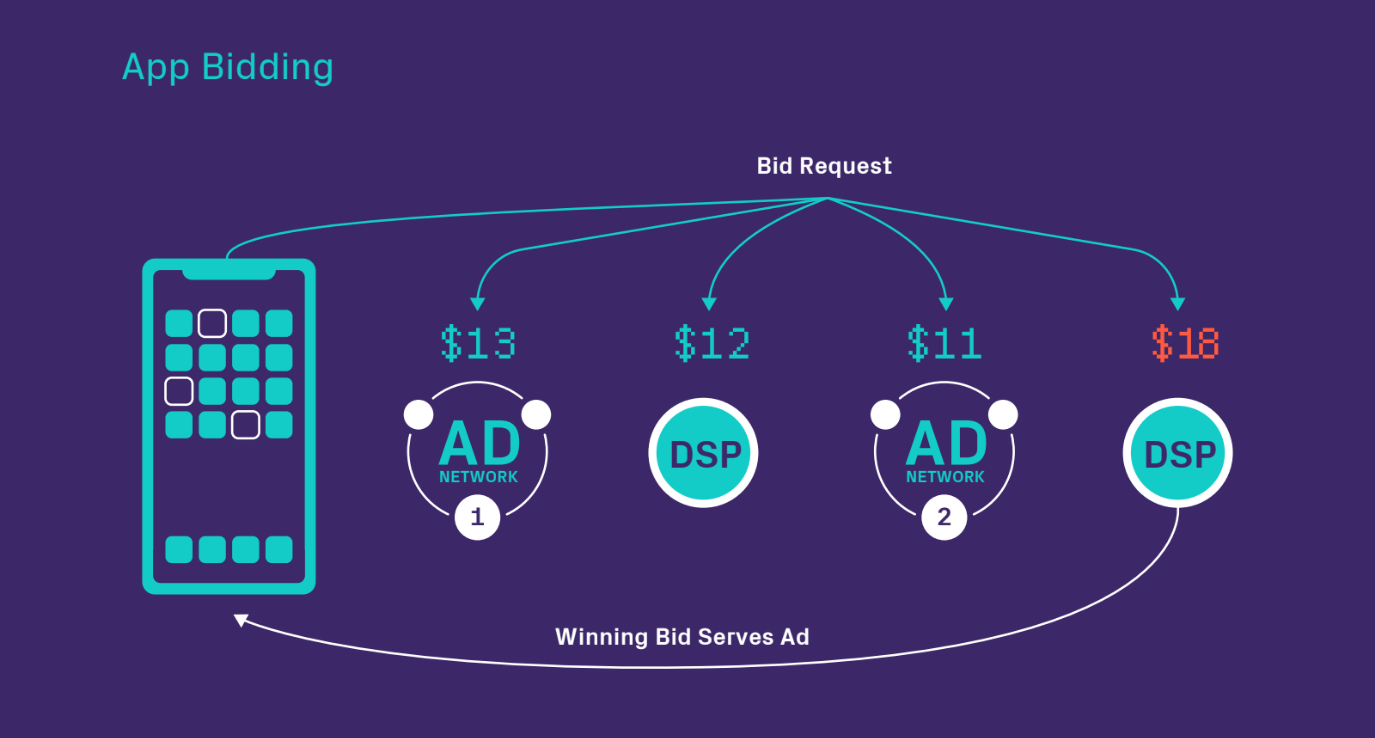
How to Get Advertisers on Your App: A Beginner’s Guide to Mobile Ad Monetization
In-app ads don’t just magically appear in your app. Here’s how to get advertisers on your app and start driving mobile ad revenue.
Today, 89% of publishers monetize their apps using in-app advertisements, but getting ads on your app doesn’t happen automatically. App publishers make arrangements with advertising demand sources who fill inventory in exchange for a share of revenue. In addition to in-app purchases and subscriptions, in-app advertising is one of the three primary ways that app publishers generate revenue.
In the modern app ecosystem, publishers have many options for implementing in-app ads — but deciding which approach to take requires careful consideration for the revenue potential they provide, as well as the user experience.
In this post, we’ll explore how to get advertisers on your app and highlight the benefits and drawbacks of each approach.
Jump to a section…
How to get advertisers on your app
Direct deals
Ad networks
Ad waterfalls
Programmatic ad options
Programmatic supply-side platforms
Programmatic ad exchanges
App bidding
Hybrid solutions
Monetize your app with the right advertising channel
How to get advertisers on your app
Believe it or not, mobile advertising is still in its infancy, but the industry is evolving rapidly. Over the past two decades, we’ve seen new innovations emerge that strengthen advertiser and publisher partnerships. Today, these partnerships take many forms, including:
- Direct deals: Publishers and advertisers (who can often be other publishers!) can negotiate the sale of ad inventory directly, either in-person or through a third-party broker.
- Ad networks: Ad networks facilitate commercial relationships, acting as an intermediary between large volumes of publishers and advertisers based on existing supply and demand.
- Ad waterfalls: Waterfalls allow publishers to manually prioritize multiple demand sources in order to drive more revenue. They can be developed and managed using any number of technical solutions including supply-side platforms or custom ad servers.
- Programmatic supply-side platforms: Publishers work with supply-side platforms, or SSPs, to automate the management and sale of their ad inventory to brands and other apps willing to pay for the opportunity to connect with new audiences.
- Programmatic ad exchanges: Programmatic exchanges assemble inventory from publishers, networks, and SSPs and pair it with demand from advertisers through real-time bidding auctions.
- App bidding: App bidding allows publishers to hold real-time unified auctions between programmatic and network-based demand sources within the app itself. This model cuts down SDK weight, generates more revenue, and improves efficiency compared to the waterfall approach.
- Hybrid solutions: Hybrid ad solutions can offer any combination of features described above. For example, a hybrid ad solution might feature app bidding within an ad waterfall.
Let’s look at each option in more detail:
Direct deals
While direct deals are still fairly common in desktop publishing, they’re rarely used in today’s mobile ad industry. In this approach, publishers and advertisers typically negotiate a deal for a number of ad impressions at a specific cost-per-mille, or CPM, and the timeline over which those impressions will be served. These deals can be arranged directly or via a third-party broker. In both cases, each party knows how much inventory is available well before it deploys in-app.
Today, direct deals occur most frequently when publishers need placements that don’t reflect traditional advertising models. For example, a shopping app might partner with an advertiser to offer high-value coupons and promotions in-app. Another example might be a sponsored content partnership, in which a brand property appears as part of a mobile game or app’s core functionality. These types of partnerships typically involve a lot of moving parts, including development resources, and are typically handled in the form of a pre-negotiated contract between the advertiser and publisher.
While direct deals are financially beneficial to publishers, they do have drawbacks. Most notably, they are time-consuming to prepare and difficult to scale across a large user base due. They require a lot of operational overhead including contract negotiations and manual coordination. All the same, direct deals are worth considering when they have value to advertisers and can drive high payouts.
Ad networks
While direct deals excel in a one-to-one marketing relationship, ad networks let publishers sell inventory on a greater scale more reliably. Ad networks first appeared in online advertising’s early days to act as intermediaries between publishers and advertisers. After partnering with an ad network, publishers incorporate a small SDK into an app’s code that requests and deploys ads from a centralized ad server.
Ad networks are immensely useful when it comes to pairing inventory supply with advertiser demand, although not all networks treat impressions equally. Some curate high-value inventory and resell to advertisers at a premium price. Others collect unsold inventory, combine the impressions into bundle deals, and sell them at a remnant price. Specialist networks will even sell inventory by industry vertical to ensure relevancy for advertisers.
In the early days of SDK ad networks, a publisher typically contacted a representative who directly managed their account. Today, many networks also offer self-service dashboards to manage inventory and data analysis reports. SDK networks will likely have a bigger role in the years ahead as IDFA-based ad models fall away, placing a renewed emphasis on direct yet scalable relationships.
Did You Know?: While some other mobile ad networks only pay developers when users click on the ads they serve, Vungle offers publishers ad revenue based on a flat CPM rate. This aims to get publishers paid top dollar for their ad impressions, no matter what.
Want to learn more? Get in touch with us today!
Ad waterfalls
Unless contractually stated, mobile publishers are typically not limited to using a single ad network. Adding multiple SDKs to an app grants access to a broader array of advertisers, although one would need to manually prioritize each demand source using some kind of technical solution like an SSP. To do so, publishers can implement an app waterfall that distributes valuable inventory to premium networks before unsold inventory goes to non-premium sources.
While only one network will ultimately gain each impression, ad waterfalls leverage historical performance data to ensure high-spend networks get the first shot at claiming audience impressions. The benefit being that as more impressions are called and the quality of ad that any individual network is able to return starts to decline, publishers can revert to the next highest ad network in order to keep earnings high.

In 2020, waterfalls are the most common way to get advertisers on your app, but they are not the most efficient. For example, if a non-premium advertiser will pay more for a specific ad impression than a premium ad partner, they still have to wait until the latter turns the opportunity down. For publishers, this limits potential revenue that would otherwise be gained by prioritizing competitive advertisers.
Another concern with waterfalls occurs when publishers integrate too many SDKs into their apps. If not optimized effectively, this leads to “SDK bloat” which can introduce a number of performance issues like latency and maintenance cost, as well as surface development challenges like coming up against method limits.
Programmatic ad options
Programmatic advertising is a relatively recent innovation. It allows media buyers to purchase inventory at scale based on the audience they wish to target, rather than focusing on a single channel. This dynamic is achieved through an ad sales process known as real-time bidding (RTB) that sees inventory sold in a unified auction as opposed to a sequential order. The programmatic ecosystem has multiple entry points and specific use cases for publishers.
Programmatic supply-side platforms
Supply-side platforms (SSPs) automate, manage, and optimize the sale of ad inventory. Each SSP connects to demand sources — such as networks, ad exchanges, or demand-side platforms — and helps facilitate the unified auctions that determine the winning advertiser bids for each impression in real-time. These fully automated platforms drastically reduce the overhead costs of ad monetization by streamlining the sale of inventory on behalf of publishers, reducing the complexity of negotiating with multiple partners. SSPs can function as independent publisher-controlled platforms, but many modern ad tech companies have started to offer supply-side features as an added service.
Programmatic ad exchanges
Ad exchanges partner with both publishers and advertisers to unify supply and demand at a global scale. Exchanges gather inventory from multiple publishers and SSPs in real-time before presenting offers to ad buyers. Google Ad Exchange is the most well-known example, but Verizon Media, PubMatic, Xandr, and MoPub also support their own exchanges, among many others.
Once partnered with an exchange, publishers can set floor prices and targeting options that focus inventory within a massive demand pool. They function much the same as a stock exchange would, wherein traders can set similar limits for the exchange of securities. On the downside, most exchanges have high revenue and traffic requirements that limit small and medium-sized publishers from accessing their services.
App bidding
Of the programmatic options, the most recent is app bidding. As the name implies, app bidding solutions allow publishers to host real-time programmatic auctions in-app via code. For publishers, app bidding is more efficient than waterfall mediation for a variety of reasons. The approach allows media buyers with different models (e.g. programmatic ad networks, ad networks with mock-bidders, and DSPs) to compete on an even playing field, increasing publisher revenue as a result.
All demand sources involved in the auction receive and process bid requests, typically using the OpenRTB protocol, that contain information they can use to programmatically determine what they’re willing to bid for the impression. It also drives higher revenue than many other options because DSPs and SDK networks can compete alongside each other with fewer middlemen.

Hybrid solutions
Programmatic technology is still relatively new, which leaves many publishers without the necessary infrastructure to implement it effectively. What’s more, many existing solutions lack direct deal support or other customizable options. To that end, some platforms offer hybrid solutions, combining app bidding with features from direct deals and even ad waterfalls. While hybrid models aren’t as efficient as purely programmatic mediation, they grant publishers manual control over their inventory.
Monetize your app with the right advertising channel
One of the most crucial elements of monetizing your app is simply choosing the right partner — and that’s where Vungle can help. We are a mobile advertising platform that offers complete monetization and in-app advertising solutions that emphasize quality and performance above all else. Our team will work with you on solutions that complement your existing user experience to ensure you get the highest return on investment. Get in touch with us today for more details.
